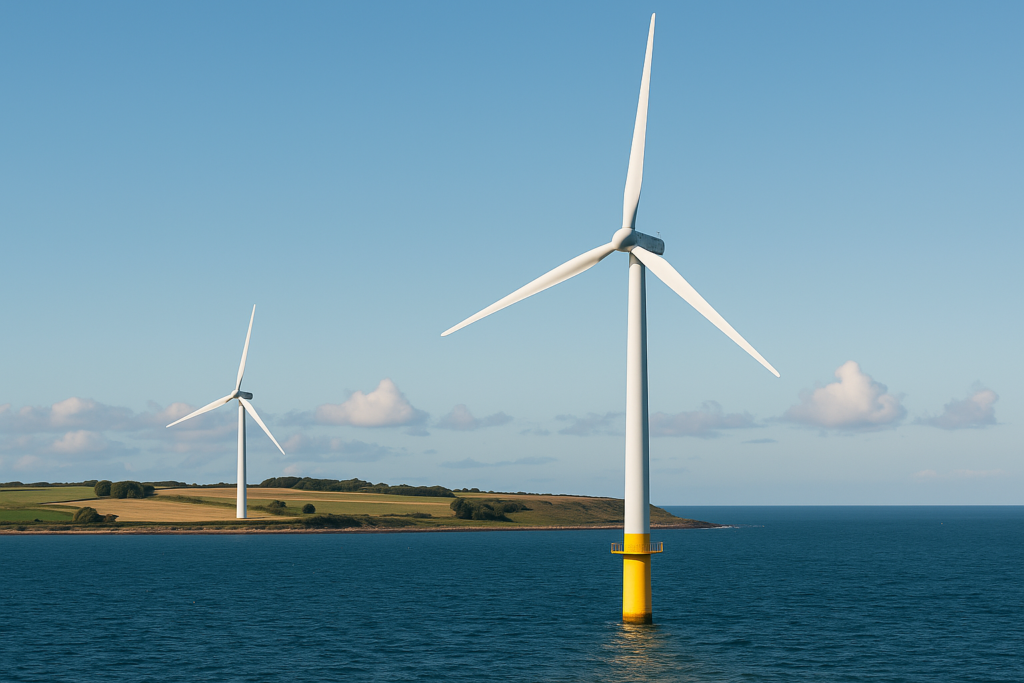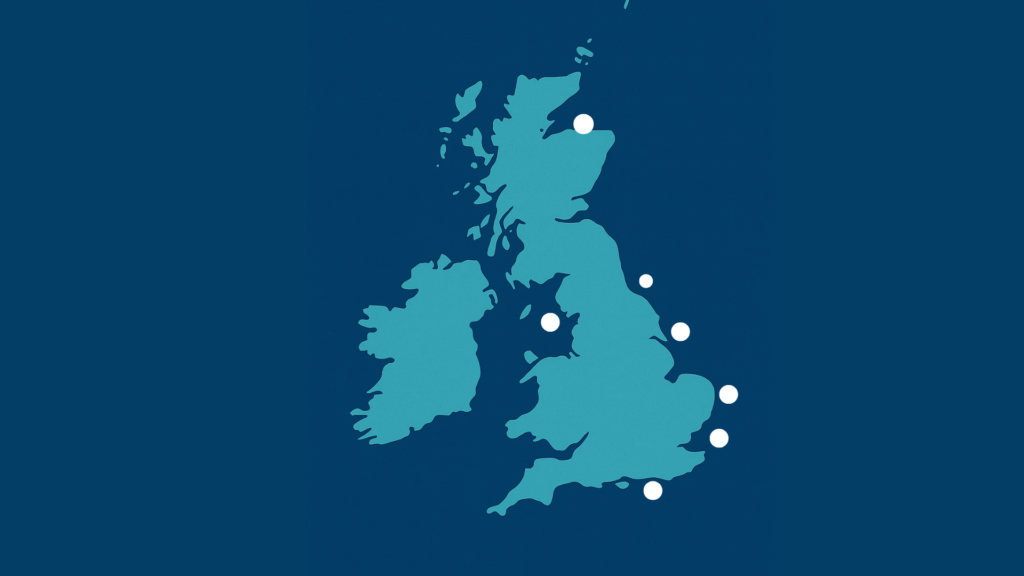At NeuWave, we’re hyper-focused on offshore wind and its role in the clean energy revolution. So here, in the Back to Basics series, we’ll be taking a deep dive into the foundations and future of offshore wind.
In the UK, we’re shifting our relationship to energy production and consumption. It’s not just the technicalities involved, energy development projects require community support, reliable funding, and the ability to demonstrate value and regulatory compliance, right from the initial pre-planning stage. This is no different for offshore wind farms.
So, let’s start from the beginning: What actually is offshore wind, and how does it stack up against traditional onshore wind farms?
Accessible insights empowering the next generation of offshore developments…
Confident decision making starts with actionable, regulation-ready data. Streamline your development’s environmental assessments with high-resolution hindcast data, backed by deep AI analysis. All in one place.

What’s the difference between offshore and onshore wind?
It’s straightforward enough: offshore wind is the power generated by turbine clusters at sea, and onshore refers to those located on the land.
Onshore wind farms are generally built in remote rural areas and on hillsides, as they can visually (and physically) dominate the local landscape. They’re also expansive, and buildings and other structures can’t disrupt the wind flow, meaning they use a tonne of space that could otherwise be used for development, agriculture, etc.
Offshore wind is generally considered to be more consistent. It also uses up ocean space, rather than viable land; and has less visual and auditory impact on local communities.
The first onshore wind farm in the UK was built in 1991, with offshore wind development following just over a decade later. In the early 2010s, new planning regulations brought in under David Cameron effectively banned new onshore wind. Development and investment in the UK has (unsurprisingly) tended towards offshore wind since.
How does offshore wind affect the environment?
Space isn’t really an issue for offshore wind farms, but mitigating environmental impacts can be. The construction and maintenance of offshore turbines has previously damaged and disrupted marine ecosystems; and ensuring this is controlled is a huge element of offshore wind development.
Animal species are often displaced by onshore turbine construction, however. Not only are local ecosystems affected – such as flying birds and bats – but so are local human communities.
Offshore wind is generally considered to have less negative environmental impact than most alternatives (onshore wind or otherwise).
Comparing offshore vs onshore wind costs
Comparing the cost of offshore vs onshore wind energy doesn’t just affect developers. It trickles down to the grid, and weighs into the consumers’ pocket.
Onshore wind projects have greater variability in potential construction costs, depending on environmental conditions, current infrastructure, and the specificities of the chosen site.
Offshore wind farms are more complex, though; you’re dealing with often hostile and less predictable local conditions. This means that offshore wind developments can cost between 2-3x more than onshore wind farms.
This isn’t stationary, and the deeper the water at the site, the more expensive offshore development tends to be. Projects nearer to the shore currently cost less. But recent innovation in (and wider adoption of) floating offshore wind turbines could help to make offshore wind cheaper and more accessible.
Nearshore environmental conditions are often volatile and harder to predict. That’s where next-gen tools like NeuWave come in. Analysing robust, high-resolution hindcast data that’s precise enough to offer real insight – even in shallow water zones.
How long before a wind turbine pays for itself?
Offshore wind turbines benefit from higher wind speeds, consistent conditions, and often generate more energy than onshore wind farms. They need more investment from the start, but with higher energy potential offshore wind is often more financially viable in the long-run.
Estimates vary pretty widely on exactly how long it takes for wind farms to fully pay back the construction and planning costs – usually somewhere between 1-10 years. Individual projects will depend upon initial costs, as well as maintenance needs, unexpected downtimes, and ultimately the energy output managed at the site.
Why is offshore wind better than onshore?
Onshore wind turbines are generally cheaper and quicker to build than they are offshore. They’re also easier to connect to the grid, not requiring complex undersea cables. It may seem simple on the surface, but onshore wind also has a greater ecological footprint, and intermittent energy production capabilities.
Wind farms located offshore are subject to complex logistics, and installation and maintenance are always at the mercy of local weather conditions. Hostile seawater environments also erode foundation and turbine structures, meaning the ongoing costs are often higher than onshore.
But offshore wind turbines can produce twice the amount of energy compared to the average onshore site.
They may be more difficult to maintain, but offshore wind is the better choice for reliable energy generation. Ongoing maintenance requirements also mean increased local demand for trained personnel – increasing careers and training opportunities in coastal communities.
Ultimately, despite its limitations, offshore wind takes up less viable land space and puts more electricity on the national grid.
Comparison table: offshore vs onshore wind:
| Advantages | Disadvantages | |
|---|---|---|
| Offshore wind | Higher wind speeds for greater potential energy outputLess restricted by space requirements and ecological restrictions | Construction and maintenance is more expensive and challenging |
| Onshore wind | Less expensive and quicker to build and maintain | Variable wind speeds causing intermittent energy generationVisual, auditory, and other ecological impacts |
Table 1: Summary of advantages and disadvantages of offshore and onshore wind farm development
Where are the UK’s offshore wind farms?
The UK’s operational offshore wind capacity is currently just under 15 GW – with three new projects expected to reach full commissioning in 2025 pushing this to 17.5 GW. The offshore wind industry has seen huge growth in the decades since its inception, and we only expect this trend to continue.
Most of the existing offshore wind farms in the UK are off the eastern coastlines and in the North Sea.
EnergyPulse forecasts that the UK’s offshore wind capacity will be in excess of 40 GW by 2030; hinging on the completion of recently announced FLOW developments as well as other key industry expansions.

Floating offshore wind (FLOW) farms can operate in shallower waters nearer to shore, and bring construction and operations costs down. The recent announcements are specified for the Celtic Sea, opening up a whole new region for offshore wind power in the UK.
Next up in the Back to Basics series we’re going to dive into the technicalities: how does offshore wind actually work?
Get ahead of the future with high-resolution environmental data…
Deep insights for future-focused offshore wind development projects. Get high-resolution hindcast data for accurate, compliance-ready environmental reporting. From site assessment to vessel navigation.

